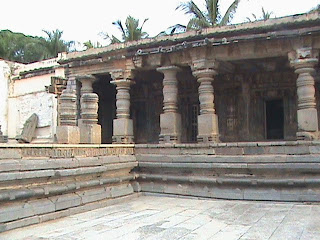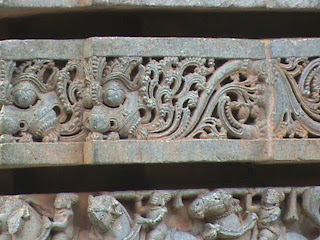Monday, April 19, 2010
Temples
Temples, for hindus it is like a place where they go and try to speak to the god of their favourite.
For me, I love temples, but it should be clean and one should feel that warmth there. We hardly find temples without much noice. Now-a-days we find temples in any corner. Why so many temples?.
One should think of saving our old temples which are more than 200yrs to 500yrs old ones. I like to collect information about ancient temples and if i get a chance would love to do some kind of research.
Here I am publishing few details of temples which I did visit. Hope you all will like it..................
For me, I love temples, but it should be clean and one should feel that warmth there. We hardly find temples without much noice. Now-a-days we find temples in any corner. Why so many temples?.
One should think of saving our old temples which are more than 200yrs to 500yrs old ones. I like to collect information about ancient temples and if i get a chance would love to do some kind of research.
Here I am publishing few details of temples which I did visit. Hope you all will like it..................
Monday, April 12, 2010
Somanathpur
Somanthpur, a small village on the banka of river Kaveri,
The temple, however, was not built by the king but by his celebrated army commander, Somnath. Some year ago he had founded a village on the left bank of the Kaveri River, which he named Somnathpur, after himself. Now in a bid for further immortality, Somnath petitioned the king to grand him the permission and resources for his project of setting up a grand temple to glorify Hoysala craftsmanship.
Soon work began. The best sculptors in the realm were commissioned for the task. There came sculptors whose wizardry with the hammer and chisel was almost legendary. Among them was the famous Mallitamma. Then there were sculptors: Ballayya, Chaudayya, Bharmayya, Kamayya and the Nanjayya. Of the 194 carved images on the outer walls, Mallitamma's contribution was forty. We know this because all the sculptors have signed their works - a practice unusual for its times, but also evident in Hoysala temples at Belur and Halebid.
The king not only bestowed Somnath with his largesse, but also sanctioned an annual grant of 3,000 gold coins for the temple's upkeep and maintenance. All these facts are duly mentioned on the slab and appear as though to have happened yesterday!
Interestingly, the earliest Hoysala monarchs were Jains. It was the great Vishnuvardhana (1108-42) who embraced Vaishnavism under the influence of the celebrated Vaishnava reformer Ramanuja. Later Hoysala rulers even became Saivites. But general tolerance of all faiths was typical of their rule. The Hoysala Dynasty finally came to an end around 1346 A.D. when the Vijayanagar Empire rose to power. Today Somnathpur is like any other Lackadaisical Indian village surrounded by farms of millet and sugarcane. Not as famous as Belur and Halebid, the Hoysala temple at Somnathpur, however, is truly unique in design, perfect in symmetry and the stone carvings are remarkable marvels in stone.
For the inscription on the stone slab, it becomes fairly evident that the magnificent temple was completed and consecrated in 1268 A.D. The shrine stands in the middle of a walled compound, around which runs an open verandah with 64 cells. The temple itself, stellar in shape, has three profusely carved pinnacles with a common Navranga and stands on a raised platform. The three sanctums once housed beautifully carved idols of Kesava, Janardhana and Venugopala. Today the idol of Lord Kesava is missing, but the other two still adorn the sanctums in their original form.
Subscribe to:
Posts (Atom)













